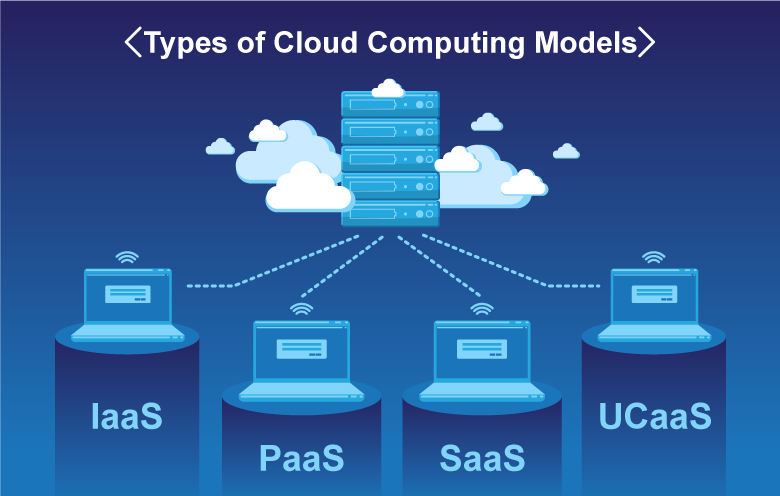Simplify Your Facilities With Cloud Provider
As businesses navigate the ever-evolving landscape of technology and data management, the role of cloud solutions in streamlining facilities has come to be significantly noticeable. The allure of structured procedures, enhanced performance, and enhanced resource allocation via cloud services is undeniable. The journey in the direction of a much more economical and agile IT facilities involves even more than just moving to the cloud. It requires a strategic technique and a deep understanding of the nuances of cloud adoption. So, just how can services effectively browse this transition and genuinely unlock the capacity of cloud solutions for simplifying their framework?
Benefits of Cloud Provider
Cloud solutions use a streamlined method to managing IT facilities, supplying businesses with scalability, cost-efficiency, and versatility. One of the crucial advantages of cloud solutions is the scalability they supply. Companies can quickly scale their resources up or down based on need, ensuring they only pay for what they make use of. This flexibility is especially advantageous for companies with varying requirements or those experiencing development.
Additionally, cloud services remove the demand for services to purchase pricey software and hardware. This cost-efficiency is a considerable benefit, specifically for little to medium-sized business looking to decrease in advance costs. By making use of cloud services, businesses can access high-quality IT sources without the significant cost connected with traditional framework setups.
In addition, cloud services give companies with the adaptability to access their information and applications from anywhere with an internet connection. This degree of accessibility enhances partnership amongst groups, enables remote job, and increases general performance. The flexibility used by cloud solutions empowers organizations to adapt rapidly to altering market problems and client needs.
Expense Savings and Scalability
In enhancement to the functional advantages highlighted earlier, the integration of cloud services right into a business's framework brings forth substantial expense financial savings and improved scalability. Cloud services use a pay-as-you-go version, permitting companies to scale resources up or down based on current needs, therefore avoiding the expenses linked with maintaining excess capability. This flexibility enables business to adapt rapidly to varying demands without incurring unneeded costs.
Additionally, cloud solutions get rid of the need for upfront financial investments in equipment and software program, lowering resources expenditures. General expenses are also decreased as business no more need to manage and keep physical web servers, causing lower energy consumption and IT staffing costs. Additionally, cloud services give automatic updates and upkeep, guaranteeing that the infrastructure continues to be updated and secure without requiring hands-on interventions.
Boosted Safety Measures
Applying rigorous protection measures is vital when integrating cloud services into a firm's facilities to make sure and protect sensitive information conformity with market policies. Cloud service providers offer enhanced safety and security features such as data file encryption, firewall software security, and multi-factor authentication to alleviate cybersecurity dangers.
In addition, normal safety and security audits and conformity evaluations assist identify susceptabilities and make certain adherence to sector requirements. Companies can additionally take advantage of attributes like computerized safety updates and real-time risk surveillance given by cloud provider. By focusing on safety and security measures and staying proactive in resolving possible dangers, companies can confidently leverage cloud services while securing their important information from unauthorized gain access to or violations.
Transitioning to Cloud Infrastructure
To efficiently integrate cloud solutions into a company's facilities, a structured technique that resolves the shift in the direction of cloud-based options is imperative. Transitioning to shadow framework involves cautious preparation and implementation to ensure a smooth migration procedure. The initial step is to evaluate the existing infrastructure and identify which systems and applications are appropriate for migration to the cloud. This assessment needs to consider aspects such as information sensitivity, conformity needs, and efficiency needs.
As soon as the evaluation is total, a movement technique ought to be established. This method must lay out the timeline, sources, and duties for relocating each part to the cloud. It is necessary to interact this strategy plainly to all stakeholders to make certain positioning and minimize disturbances during the shift.
Throughout the migration surveillance, process and testing are crucial to recognize and attend to any type of issues promptly. Normal checkpoints must be established to track progression and make needed adjustments. In addition, training for workers on using cloud solutions ought to be provided to make certain an effective transition and take full advantage of the benefits of the brand-new infrastructure.
Ideal Practices for Cloud Adoption
Effective adoption of cloud solutions rests on the critical positioning of business goals with technological capacities and organizational preparedness. To make sure a smooth transition to the cloud, companies must start by conducting a comprehensive analysis of their existing infrastructure and determining which work are best matched for cloud migration. It is critical to involve crucial stakeholders from various departments in the decision-making process to get buy-in and address any kind of worries early.
Another best method for find this cloud fostering is to prioritize view it now safety and conformity. Organizations has to thoroughly examine the protection measures used by cloud provider and guarantee that their information is protected according to market requirements and regulatory needs. Implementing robust information encryption, access controls, and normal safety and security audits can aid reduce dangers connected with cloud adoption.

Final Thought

As companies browse the ever-evolving landscape of innovation and information monitoring, the duty of cloud solutions in simplifying framework has actually become progressively famous - Cloud Services. How can companies properly navigate this transition and genuinely open the potential of cloud services for simplifying their framework?
Cloud services use a structured approach to handling IT framework, supplying businesses with scalability, cost-efficiency, and adaptability. By making use of cloud solutions, organizations can access premium IT resources without the large cost tag connected with standard facilities configurations.
To make certain a smooth change to the cloud, Related Site companies must begin by performing an extensive evaluation of their existing framework and identifying which workloads are best suited for cloud migration.